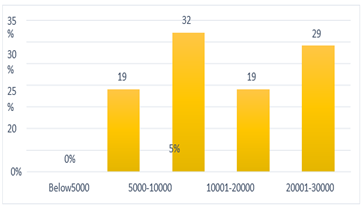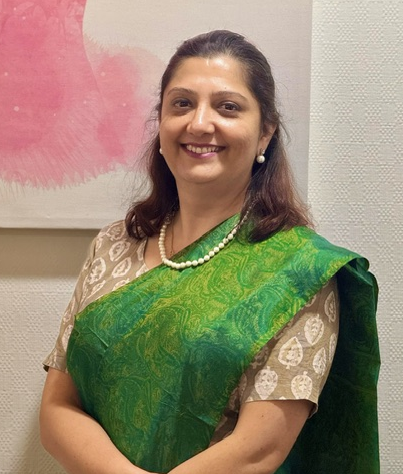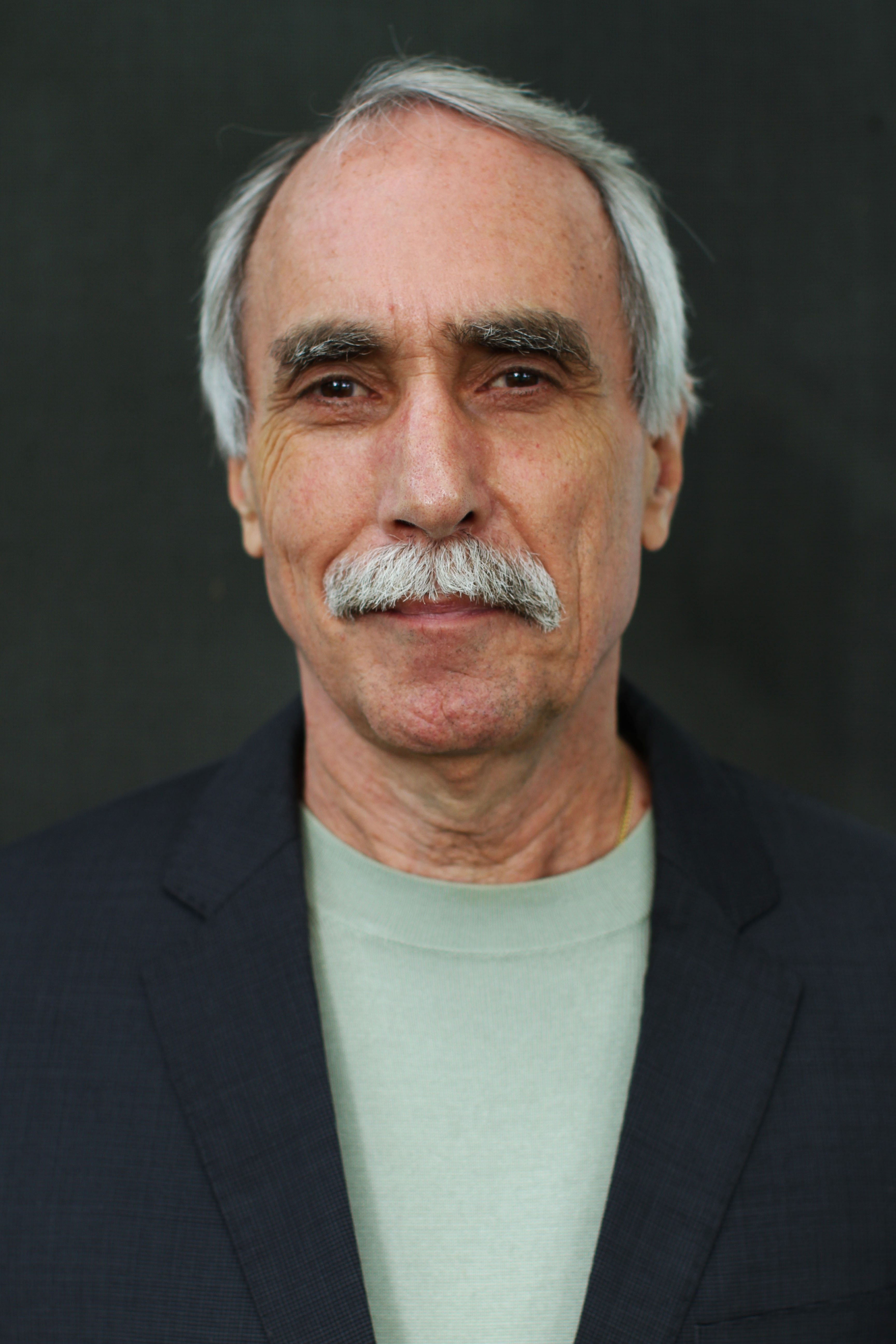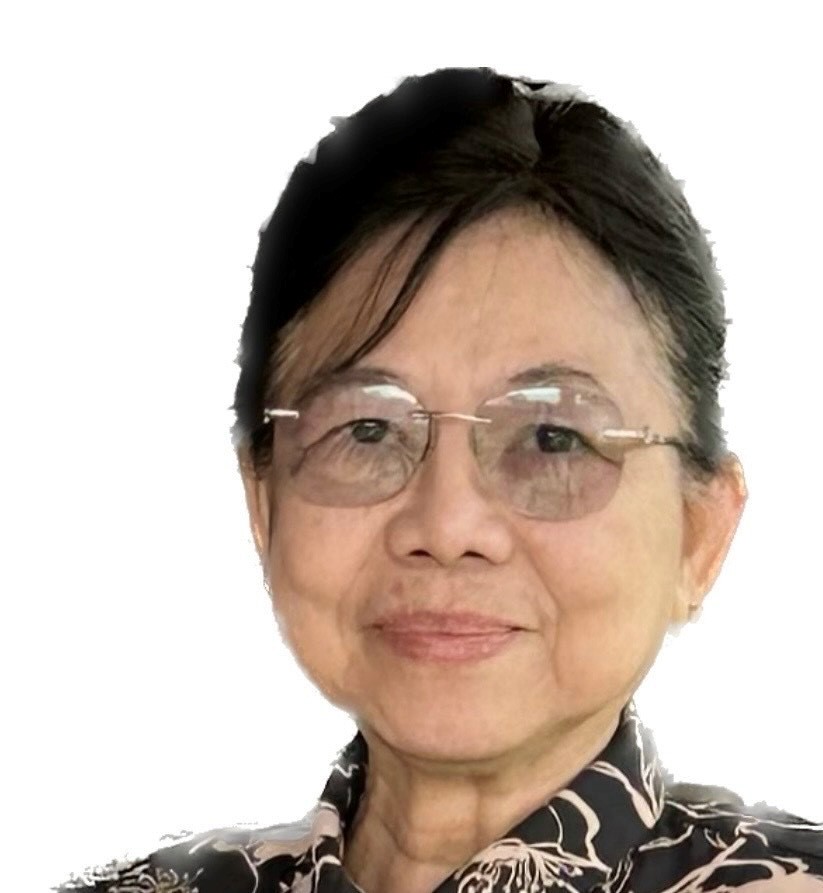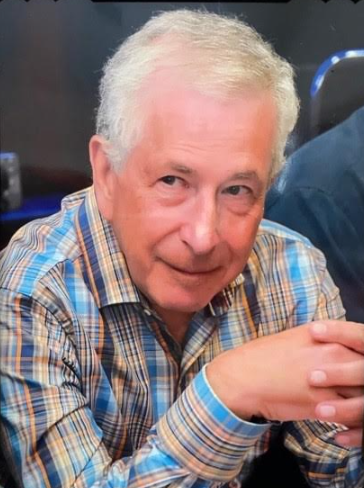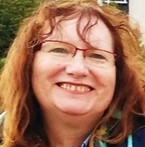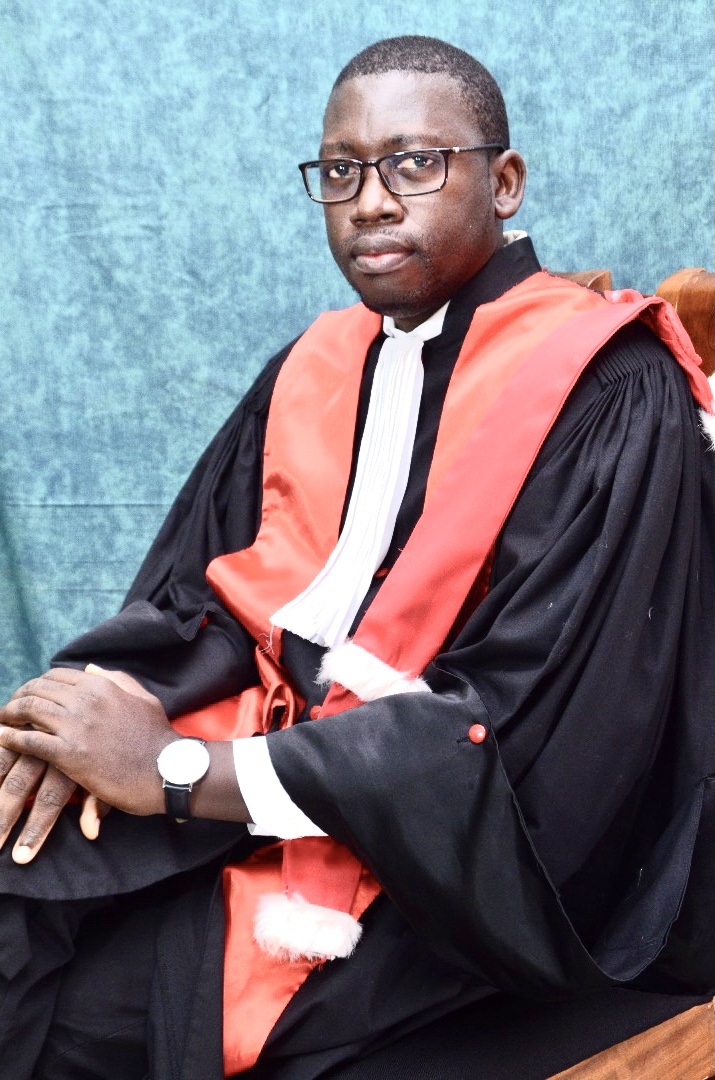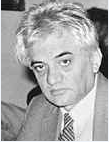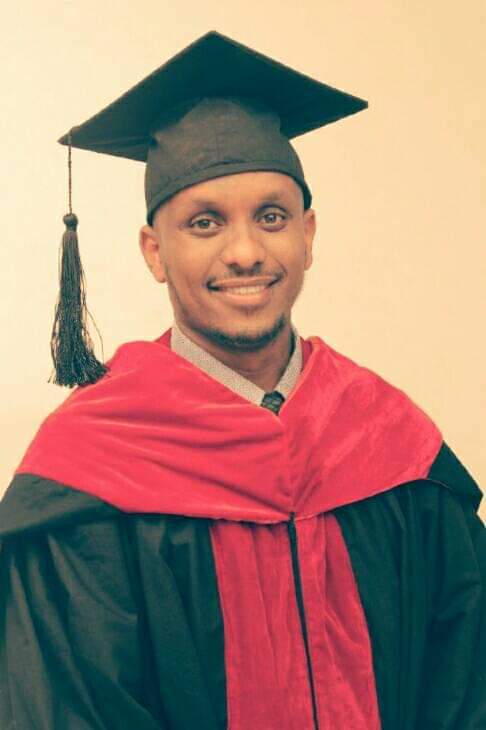Research Article
Healthcare Access and Socio-Economic Determinants of Well-Being Among the Matua Community in Bangladesh
- Ayrin Ahmed *
Assistant Professor (History), School of Social Sciences, Humanities and Languages, Bangladesh Open University, Bangladesh.
*Corresponding Author: Ayrin Ahmed, Assistant Professor (History), School of Social Sciences, Humanities and Languages, Bangladesh Open University, Bangladesh.
Citation: Ahmed. A. (2025). Healthcare Access and Socio-Economic Determinants of Well-Being Among the Matua Community in Bangladesh. Journal of BioMed Research and Reports, BioRes Scientia Publishers. 7(3):1-9. DOI: 10.59657/2837-4681.brs.25.140
Copyright: © 2025 Ayrin Ahmed, this is an open-access article distributed under the terms of the Creative Commons Attribution License, which permits unrestricted use, distribution, and reproduction in any medium, provided the original author and source are credited.
Received: February 07, 2025 | Accepted: February 21, 2025 | Published: February 28, 2025
Abstract
The Matua community, a historically marginalized Hindu sect from the Barishal district of Bangladesh, continues to confront numerous socio-economic and cultural challenges rooted in long-standing caste- based discrimination. This study aims to examine the socio-cultural standing of the Matua people by conducting a descriptive analysis of 31 participants, with attention to factors such as education, income, cultural traditions, and political participation. The results show a notable improvement in education, as 32% of respondents have reached higher education levels. However, income inequality remains pronounced, with over 60% of the community earning less than the national average. Caste-based prejudices still obstruct social inclusion and economic progress, disproportionately impacting those with lower education and income levels. Additionally, the absence of political representation hampers the community’s efforts to address their socio-economic issues effectively. Gender inequality is another significant challenge, as Matua women face difficulties in securing professional opportunities, despite advancements in education. The study underscores the necessity for targeted strategies in education, political participation, and economic growth, healthcare access along with addressing broader issues like caste discrimination and gender inequality.
Keywords: matua; healthcare; socio-economic status; education; gender inequality; political representation
Introduction
The Matua community, a marginalized Hindu sect with roots in the 19th century, holds a significant socio- religious presence in the Bengal region, particularly across Bangladesh and West Bengal, India. Founded by Harichand Thakur in the 1860s, the Matua movement arose as a response to the deep-seated caste discrimination present within Hindu society at the time. As followers of the Matua faith, the community primarily belongs to the "Namashudra" caste, traditionally regarded as a lower-caste group within Hinduism. Harichand Thakur’s teachings centered on principles of social equality, human dignity, and the empowerment of marginalized groups through education and religious reform, making the Matua movement a powerful counterforce to caste oppression [1].
Following the partition of Bengal in 1947, the Matua community experienced profound socio-political shifts. Many Matua families migrated to India to escape religious and political persecution, although a large portion of the community remained in what later became Bangladesh [2]. In Southern Bangladesh, particularly in the Barishal district, the Matua people continue to face significant socio- economic challenges as a minority in a predominantly Muslim country. Despite these hardships, the Matua community has shown remarkable resilience, maintaining its cultural and religious identity [3]. Today, the socio-cultural status of the Matua community in Bangladesh is shaped by a complex mix of historical marginalization, economic difficulties, and a dynamic cultural identity. Although educational achievements have risen, with many Matua members now pursuing higher education and entering professional fields, economic disparities are still prevalent. According to research, caste-based discrimination remains an issue, particularly within intra-Hindu social hierarchies, worsening the socio- economic conditions of the community [5]. Furthermore, despite educational progress, Matua women face limited access to professional opportunities, reflecting broader patterns of gender inequality in rural Bangladesh [6]. This study seeks to examine the socio-cultural status of the Matua community in Bangladesh's Barishal district, focusing on demographic trends, economic conditions, cultural practices, and integration into broader society. The objectives of the study focus on understanding the socio-economic challenges faced by the Matua community in Barishal. First, the study aims to evaluate the role of education in improving the community's socio-economic status, highlighting how access to quality education can empower individuals and promote upward mobility. Second, it seeks to analyze income disparities within the Matua community and compare them with national averages in Bangladesh, providing insights into economic inequalities. Third, the study assesses the effects of caste-based discrimination on the social, health, and economic advancement of the community, exploring how systemic biases hinder their progress. Lastly, it examines how the lack of political representation affects the Matua community’s ability to address their socio-economic challenges and secure their rights, shedding light on the importance of political inclusion for marginalized groups.
The research highlights the community's ongoing efforts to improveits standing through education, political participation, and socio-economic development, while grappling with caste discrimination, political marginalization, and economic inequality (Sarker, 2017). A deeper understanding of these dynamics is essential for shaping policies that can enhance the socio-economic well- being of the Matua people and ensure their full participation in Bangladesh’s development.
Problem Statement
The Matua community in Bangladesh, which began as a religious reform movement among lower-caste Hindus in the 19th century, continues to face considerable socio-economic challenges despite its longstanding efforts toward social upliftment. Historically, the Matua movement emerged in response to caste-based oppression within Hindu society, advocating for the dignity and equality of marginalized Namashudra castes [8]. Yet, even today, many within the community endure persistent inequalities, especially in rural areas like Barishal, where their socio-economic struggles are compounded by limited political representation and ongoing caste discrimination [9]. While the Matua community has made progress in terms of educational attainment—32% of its members have now completed higher education—economic disparities remain severe. A significant number of households continue to subsist below the national average income, with many relying on small-scale farming or business ventures for survival [10]. Moreover, despite better access to education, women in the community still face significant obstacles in joining the workforce, often confined to roles as housewives or part-time laborers [11,12]. This gender-based economic inequality deepens the overall economic challenges the community faces, hindering broader socio-economic progress. Cultural identity is another key aspect of the Matua community, offering a sense of solidarity through religious practices and Namashudra rituals. However, while their cultural unity remains strong, it has not translated into political power. The Matua people are underrepresented in local governance, limiting their ability to advocate for their rights and secure vital resources [13]. This lack of political representation creates a cycle in which continued socio-economic hardships and cultural marginalization persist [14,15].
Literature Review
Educational Attainment and Socio-Economic Mobility
Education is widely recognized as a crucial factor for socio-economic mobility, particularly for marginalized groups. Scholars have argued that access to education is essential for breaking the cycle of poverty, as it allows individuals to increase their earning potential and improve their social standing [17]. This is especially relevant in South Asia, where historically oppressed communities, such as Dalits and other lower-caste groups, have relied on education to advance their socio-economic position [18]
However, various obstacles—including inadequate access to quality education, gender discrimination, and socio-economic constraints—often limit the potential for educational advancement. The Matua community, as a lower-caste Hindu sect, has faced similar challenges. Yet, their emphasis on education has led to notable improvements in their social status. Nambissan (2010) observes that communities investing in education tend to integrate more successfully into the workforce, although entrenched caste structures can still limit these gains. This is evident in the Matua community's pursuit of higher education as a means to fight discrimination and elevate their socio-economic standing [19,20].
Income Disparities and Economic Marginalization
Income inequality remains a critical issue for marginalized groups in Bangladesh. According to Hossain (2012), despite overall economic growth, income distribution is highly unequal, particularly for minority communities like the Matua. Research shows that lower-caste groups across South As°ia face restricted access to well-paying jobs, perpetuating their economic marginalization [22,23]. These inequalities are even more pronounced in rural areas, where employment opportunities are scarce and access to resources such as land and capital heavily favors higher-caste individuals [24,25]
For the Matua community, economic hardship remains a pressing concern. Many families continue to live below the national income average, as indicated by Chatterjee (2018) [3]. Furthermore, while some members obtain higher education, tlhey often struggle to convert these qualifications into significant economic gains, especially women, who face additional challenges in entering the labor market [26].
Caste-Based Discrimination and Social Exclusion
Caste-based discrimination continues to obstruct social mobility for lower-caste communities across South Asia. Studies by Ghosh (2016) and Chakrabarty (2021) document how caste hierarchies reinforce socio- economic inequalities, despite laws aimed at promoting equality [5,10]. For the Matua community, being part of the Namashudra caste means they still face exclusion in various forms, such as limited access to resources, discrimination in education and employment, and social segregation [28,29].
Caste dynamics within Hindu society often result in the marginalization of lower-caste groups, restricting their participation in social and economic activities [27,30]. Bhattacharya (2016) highlights how the Matua community’s strong religious and cultural identity, which resists caste discrimination, has helped them assert themselves in society [4]. However, systemic exclusion persists, exacerbating economic challenges and limiting access to employment, housing, and education [8].
Political Representation and Marginalization
Political exclusion is another significant challenge for marginalized communities in Bangladesh, particularly lower-caste groups like the Matua. Without sufficient political representation, these communities often struggle to secure the resources and policies necessary for their development [1]. Active political participation is critical for any community to express its needs and secure its rights, but caste-based exclusion often extends into the political sphere, reinforcing socio-economic inequalities [2].
For the Matua community, the lack of representation in local governance and political bodies has hindered their ability to advocate for their rights and address pressing issues such as poverty, discrimination, and unemployment. As Bagchi (2014) points out, political disenfranchisement has historically prevented lower- caste groups from achieving significant socio-economic improvements [15]. Studies suggest that communities with strong political participation tend to have better access to public services, infrastructure, and economic opportunities [16]. The Matua community’s absence from such political processes has left them vulnerable to continued marginalization [6].
Methodology
The research adopts a descriptive research design aimed at examining the socio-cultural and economic status of the Matua community in the Barishal district of Bangladesh. The design focuses on providing a detailed understanding of the demographic profile, income levels, educational attainment, and socio- economic challenges faced by the community. The questionnaire used to collect data has been included in the annexure section.
Sampling Method
A purposive sampling method was used to select 31 respondents from the Matua community in the Barishal district [31]. The sample was designed to include both male and female participants, ensuring diversity in terms of age, income level, and educational background. This method was chosen to deliberately target individuals who could provide relevant insights into the socio-economic conditions of the community, thereby ensuring representation from various socio-economic groups.
Inclusion Criteria
- Members of the Matua community residing in the Barishal district.
- Adults aged 18 years and older.
- Both male and female participants.
Exclusion Criteria
● Individuals under 18 years of age.
● Non-Matua residents of the Barishal district.
● Participants unwilling to provide informed consent or complete the survey.
Sample Size Determination
The sample size of 31 respondents was determined based on the study’s exploratory nature, resource availability, and the need for in-depth analysis [32]. Given the limited population of the Matua community in the Barishal district, purposive sampling ensured that the selected respondents represented the diverse characteristics of the community, enabling the study to achieve its objectives effectively.
Data Collection Period
Data collection was conducted over a two-month period from May to June. A structured questionnaire was used to gather quantitative data on the respondents' demographic information, educational levels, income, occupation, and access to basic amenities.
Data Collection Methods
The primary data was collected through structured surveys, which included closed-ended questions designed to capture quantitative data. The survey was administered face-to-face to ensure accurate and complete responses. The survey covered the following categories.
Demographic Information
Age, gender, marital status.
Education
Level of education attained (primary, secondary, higher secondary, and higher education).
Income
Monthly income categorized into brackets (e.g., below 10,000 BDT, 10,001–20,000 BDT, above 30,000 BDT).
Housing and Amenities: Type of housing, access to electricity, sanitation, and clean water.
Data Analysis
The collected data was analyzed using descriptive statistics. Frequencies were calculated to determine the distribution of respondents across categories, such as income brackets and education levels [33]. This approach provided an overview of the socio-economic profile of the Matua community in Barishal.
Maximum and Minimum Values
To identify the highest and lowest values for variables such as income, age, and education level.
Ethical Considerations
Strict ethical guidelines were adhered to throughout the research. Participants were fully informed about the study’s purpose and gave their consent before taking part. Their anonymity and confidentiality were maintained, and participants were allowed to withdraw from the study at any time. No personal identifiers were collected, and all data were analyzed collectively to ensure privacy.
Results
The idea of Matua prompted a lower-caste Hindu community in Southern Bangladesh around 1860s. The idea became a religious movement to resolve issues in Hindu religion. Matua community reconstructed their religious beliefs and fought against religious discrimination and unfairness. Lower caste Hindu community faced enormous social and religious injustice from higher caste Hindu community. This discrimination led to rise of Matua community, who were inspired to develop their educational, social, cultural, and religious welfare. The number of people in the Matua community rose significantly by keeping their faith in Matua religious ideas that connected with the Hindu religion. A large number of Matua people migrated to West Bengal during 1947. However, a sizable community resides in Southern Bangladesh, including Barishal. This study aims to investigate the socio-cultural status of the Matua community in Barishal through a survey in which the socio-cultural status is examined through five categories: Demographic Information, Socio-Economic Status, Cultural Practices and Beliefs, Social Dynamics and Integration, and Challenges and Opportunities.
Matua people receive at least basic education from educational settings in Barishal. They get primary, secondary, higher secondary and university-level education by actively participating in educational activities. They have tendency and opportunities to pursue higher education by completing Bachelor’s and Master’s degrees. 32% respondents have completed their undergraduate or postgraduate degree. Available educational institutions, positive attitude towards education and financial capabilities to continue education enable Matua people to pursue graduate and postgraduate-level education. As a result, there is no child marriage in the Matua community as they have a positive understanding of educational value. Both male and female Matua people are concerned about their educational progression and tend to marry after 18 years old. People with higher degrees are engaged in admirable professions, including private and public jobs, healthcare services, teaching, journalism, businesses, and so on. Their income can support an elevating lifestyle to fetch necessary facilities from their society. Only people with higher degrees have the capability to earn significantly enough to achieve a higher standard of living. Nevertheless, women are still behind in creating a platform for their professional life. They have less opportunities to seek jobs. Married women are mostly housewives or unemployed even though they have at least a higher secondary education. Lower-income households have lower education level and are engaged in mostly business and farming. The people with higher education have excellent accommodation facilities in the Matua community. A significant number of people still live in mud houses. These people are observed to have lower educational level and lower incomes. Almost all the Matua people own their lands and houses where they reside. It showcases their social strength in their community and ability to construct their social and cultural preservation. They have less tendency to migrate to other areas and restart their lives. Matua people have access to vital basic amenities such as electricity, clean drinking water, sanitation facilities and healthcare. The local government has established all the necessary infrastructure to deliver electricity and healthcare facilities. At the same time, they have access to clean drinking water from their daily usage. The people possess toilets and bathrooms in their houses. These commodities enable these people to obtain better standard of living and foster further social, economic, and cultural development.
The community mostly generate moderate income for their households. The data shows that 32% of people generate income between 10001 BDT and 20000 BDT monthly, which is less than the average monthly income in Bangladesh. This income level is critical for this community to satisfy their daily expenses to lead a comfortable life in Bangladesh compared to commodity prices. Again, 29% of people earn above 30,000 BDT in the Matua community, which is more than the average monthly income in Bangladesh. 19% of Matua people earn between 20001 BDT and 30000 BDT monthly, which is similar to the average monthly income in Bangladesh. The income structure of the Matua community indicates a diversified condition where most people suffer from economic hardship. More than 60% of people generate income less than the average monthly income in Bangladesh, which showcases their inability to earn sufficient income for their household. The people who earn more than average monthly income in Bangladesh have proper education and employment. These opportunities are difficult to acquire for the larger number of the Matua community, as only 32% of people have completed their higher studies.
Figure 1: Income Status
Matua people are devoted to celebrating community festivals and religious ceremonies to embrace their cultural practices and beliefs. Consequently, they celebrate Namashudra rituals, which is a unique religious event of Matua people to express their solidarity against religious discrimination and unfairness. Active participation of Matua people in religious and cultural activities showcase their acute perception regarding religion. They consider religious activities are incredibly important to their lives and ware traditional attires daily or occasionally to nurture their cultural and religious values. Their religious practices elaborate their distinctive beliefs to live without discrimination and unfairness in the society. The profound connection with religion, cultural values and Bengali language of the Matua people establishes a strong atmosphere to create an equal and fair social structure. It is important to note that their beliefs and unity are powerful regardless of their age, gender, income level, and education.
Figure 2: Involvement with Local Government
Matua community is interactive and constructive while establishing and maintaining communication and interaction with other communities. Matua people have to regularly involve themselves in interacting with people of other cultural and religious beliefs. They can lead a sound personal and professional social relationships. They do not encounter any barriers to practicing their faith and following their ways of life. People with diverse community respect Matua community by accepting them as member of the society. The mutual respect and understanding enhance their security of lives. Sequentially, there are still some hazards in the Matua community as many of the Matua people face discrimination from higher caste of the Hindu community. The people with a standard of living in terms of income, occupation, and housing face more discrimination and unfairness in their community. The most critical challenge of this community is their absence in local governance. They have no representation in political activities. As a result of that, Matua people face difficulties to raise their demands and necessities to the local government. Their inability and discouragement in politics have become a major concern to the Matua community to secure their rights and welfare in the present and future. To establish a progressive socio-cultural status, Matua people consider overcoming several challenges and utilize several opportunities. Economic hardship and lack of political representation are the most common challenges according to Matua people. People are still struggling to earn enough to enjoy a suitable living standard. More than 60% of people earn below-average monthly income in Bangladesh. They should get more opportunities to develop their economic structure through political representation, infrastructural development, better education, more social acceptance, more employment, uplifting women empowerment, and cultural reservation. Matua people aspire to join politics and construct a bridge between the Matua community and central government. The political affiliation of the Matua community will enable them to express their needs and demands to larger community. Additionally, it will diminish discrimination and unfairness that create enormous misery to the community. Their existence will be recognized and acknowledged as a special and cherished part of Bangladesh through political processes.
Education and economic development can bring substantial change in the Matua community. Only 32% of people in the Matua community completed higher studies. This situation must change, and most people should have access to higher education. Educated community has the strength to boost economic development for Matua people. Social integration and cultural preservation must also be considered to improve the socio-cultural status of the Matua community. Lastly, healthcare facilities are the least concerning matter to the Matua community as they have proper access to healthcare services in their society.
Discussion
The socio-cultural status of the Matua community in Barishal reflects a complex mix of historical marginalization, educational progress, economic hardship, and the continued impact of caste-based discrimination. This analysis synthesizes key findings, compares them with existing literature, and considers their implications for the future development of the community. Education has emerged as a major factor for socio-economic improvement within the Matua community. Findings show that 32% of respondents have completed undergraduate or postgraduate degrees, reflecting broader trends in which education serves as a way out of poverty for marginalized groups [14,23]. For many, higher education has led to better employment and income, with individuals entering respected fields such as healthcare, journalism, and public service. However, systemic economic challenges and discrimination have limited the full potential of education’s impact on the community. Despite the investment in education, many in the Matua community continue to face significant economic barriers. A large proportion of households still earn below the national average income, revealing that factor beyond education—such as limited access to high-paying jobs and ongoing caste-based exclusion—constrain socio-economic mobility. This aligns with Desai & Dubey’s (2012) findings that, while education helps marginalized communities, structural inequalities often restrict their progress [7]. Economic marginalization remains a serious concern for the Matua community. The study reveals that 60% of respondents earn less than the average monthly income in Bangladesh, highlighting stark income disparities. This echoes Hossain’s (2012) observation that, despite Bangladesh's economic growth, marginalized communities like the Matua are often trapped in low-paying jobs [12]. Even with higher education, many Matua individuals struggle to achieve economic security, with women facing particularly severe barriers in the labor market [28].
A significant point of contrast within the community is between those with higher education and those without. The formertend to enjoy better incomes and a higher standard of living, while the latter remain engaged in farming, small businesses, or low-income occupations. This uneven distribution of economic benefits supports Dreze & Sen’s (2013) argument that rural structural constraints often limit the upward mobility of lower-caste groups, even when educational opportunities are available [9]. Caste-based discrimination continues to deeply influence the Matua community’s social and economic experiences. Findings suggest that many still face exclusion, particularly in interactions with higher-caste Hindus. This is consistent with Ghosh (2016) and Chakrabarty (2021), who document how caste hierarchies perpetuate inequalities, especially in rural areas where traditional power structures remain entrenched [5,10].
Discrimination not only affects the social status of the Matua community but also exacerbates their economic challenges. Lower-caste groups like the Matua often encounter barriers in accessing jobs, resources, and services that could improve their living standards. Even those with higher education and incomes face some level of caste-based exclusion, underscoring Deshpande’s (2017) assertion that caste hierarchies continue to limit social mobility, even for those who have achieved academic success. Political representation is another critical challenge for the Matua community. The study found that their lack of political voice prevents them from effectively advocating for their rights and securing resources, further perpetuating their socio-economic struggles [8]. This reflects Ahmed’s (2014) argument that political participation is essential for marginalized groups to access the services and infrastructure necessary for development [1]. Without representation in local governance, the Matua community remains unable to influence decisions that impact their access to education, employment, and infrastructure. This exclusion also hinders their ability to address caste-based discrimination and economic marginalization. As Jha (2013) argues, political empowerment is vital for achieving social equity, and the Matua community’s lack of representation leaves them vulnerable to continued disenfranchisement [15]. While educational progress has been made, gender inequality remains a persistent issue within the Matua community. Findings indicate that, despite higher education levels, women face significant barriers in entering the workforce, often confined to roles as housewives or underpaid laborers. This mirrors broader gender inequality trends in rural Bangladesh [23]. The economic marginalization of women limits the community’s overall progress, as half the population remains underutilized.
Addressing the issue of women’s empowerment requires targeted interventions, particularly in improving access to professional opportunities and challenging traditional gender roles. Nussbaum (2003) argues that gender equality is essential for sustainable development, and empowering women could drive more substantial socio-economic progress for the entire Matua community [28]. The findings of this study highlight several areas for intervention that could significantly enhance the socio-cultural status of the Matua community. Strengthening political representation, especially at the local level, is crucial to ensuring that the community can advocate for its rights and {needs. Additionally, targeted economic programs—such as skills training and job creation—could help reduce income disparities and alleviate economic hardship.
Efforts to combat caste-based discrimination must also be prioritized, with a focus on raising social awareness and enforcing legal protections for lower-caste groups. Finally, empowering women through greater access to education and employment opportunities is essential for fostering holistic development within the Matua community.
Limitations
In this study, the primary methodological bias arises from the use of purposive sampling, which, while intentional and useful for gathering specific insights, may not provide a fully representative sample of the broader Matua community. This sampling technique deliberately selects individuals based on certain characteristics or criteria, which can lead to a sample that is not reflective of the diversity within the community, such as different socio-economic backgrounds, geographic locations, or experiences.
Because the sample was limited to only 31 respondents from Barishal, the findings may not capture the full range of experiences or challenges faced by the Matua community across Bangladesh. The sample may over-represent certain groups (e.g., individuals with higher education or better socio-economic standing) while under-representing others, leading to a skewed understanding of the community's overall conditions.
Additionally, the relatively short data collection period can also contribute to bias. A brief timeframe may not allow for in-depth exploration of respondents' perspectives, particularly in areas where complex social, economic, or cultural factors are at play. This may result in superficial responses or the omission of important details, further limiting the study's ability to fully capture the community's experiences.
In summary, the methodological bias in this study stems from purposive sampling, which may not provide a comprehensive or representative sample of the Matua community, and the short data collection period, which may restrict the depth of the data gathered. These factors can impact the overall generalizability and richness of the study's findings.
Conclusion
The Matua community in Barishal faces a complex socio-cultural status shaped by historical marginalization, educational progress, and ongoing socio-economic challenges. Despite advances in education, systemic barriers limit their socio-economic potential, with widespread economic disparities and many families earning below the national average. Caste-based discrimination remains a significant obstacle to social integration and economic mobility. The lack of political representation exacerbates their struggles, preventing effective advocacy for necessary resources and policy changes. Gender inequality is another critical issue, as Matua women face barriers to workforce participation, limiting overall community progress. Key interventions are needed to increase political representation, expand economic opportunities, address caste-based discrimination, and empower women to achieve sustainable development and socio-economic equality.
References
- Ahmed, N. (2014). Politics and the Marginalization of Lower-Caste Communities in Bangladesh. Journal of Political Studies, 22(1):73-89.
| Google Scholor - Bagchi, A. K. (2014). The Trauma and the Triumph: Gender and Partition in Eastern India. Orient Blackswan.
Publisher | Google Scholor - Beteille, A. (1992). The Backward Classes in Contemporary India. Oxford University Press.
Publisher | Google Scholor - Bhattacharya, N. (2016). Caste, Society and Politics in Bengal, 1872-1937.
Publisher | Google Scholor - Chakrabarty, D. (2021). The Bengal Diaspora: Hinduism, Partition and the Matua Movement. Oxford University Press.
Publisher | Google Scholor - Chatterjee, P. (2018). Caste, Identity, and Politics in Bengal’s Matua Movement. Economic & Political Weekly, 53(25):19-27.
Publisher | Google Scholor - Desai, S., & Dubey, A. (2012). Caste in 21st Century India: Competing Narratives. Economic and Political Weekly, 46(11):40-49.
Publisher | Google Scholor - Deshpande, A. (2017). The Grammar of Caste: Economic Discrimination in Contemporary India. Oxford University Press.
Publisher | Google Scholor - Dreze, J., & Sen, A. (2013). An Uncertain Glory: India and its Contradictions. Princeton University Press.
Publisher | Google Scholor - Ghosh, S. (2016). Caste and Discrimination in South Asia: Social Justice Perspectives. Sage Publications.
Publisher | Google Scholor - Gupta, D. (2005). Caste, Democracy, and the Politics of Inequality in India. Journal of Asian Studies, 64(3):533-561.
Publisher | Google Scholor - Hossain, M. (2012). Poverty and Income Inequality in Bangladesh. Dhaka University Press.
Publisher | Google Scholor - Hutton, J. H. (1946). Caste in India: Its Nature, Function, and Origins. Oxford University Press.
Publisher | Google Scholor - Jeffrey, C., Jeffery, P., & Jeffery, R. (2008). Degrees without Freedom? Education, Masculinities, and Unemployment in North India. Stanford University Press.
Publisher | Google Scholor - Jha, S. (2013). Caste, Politics, and Public Goods Provision in India. Journal of Development Economics, 100(2):1-14.
Publisher | Google Scholor - Jodhka, S. S., & Shah, G. (2010). Caste, Social Exclusion, and Poverty in India. United Nations Development Programme (UNDP).
Publisher | Google Scholor - Kumar, N. (2014). Women, Gender, and the Politics of Caste in India. Economic & Political Weekly, 49(17):34-42.
Publisher | Google Scholor - Kumar, S. (2010). Politics and Governance of Caste in South Asia. Journal of South Asian Studies, 33(2):219-236.
Publisher | Google Scholor - Mahmood, S. (2004). Politics of Piety: The Islamic Revival and the Feminist Subject. Princeton University Press.
Publisher | Google Scholor - Majumdar, R. (2011). From Postcolonial to World Literature: Reading South Asia in Global Contexts. Routledge.
Publisher | Google Scholor - Mukherjee, R. (2017). Caste and Class in Bengal: From Permanent Settlement to Partition. Cambridge University Press.
Publisher | Google Scholor - Nambissan, G. B. (2010). Education, Social Exclusion, and the Transition to Adulthood in India. International Journal of Educational Development, 30(5):342-349.
Publisher | Google Scholor - Nussbaum, M. C. (2003). Women and Human Development: The Capabilities Approach. Cambridge University Press.
Publisher | Google Scholor - Rao, A. (2012). The Caste Question: Dalits and the Politics of Modern India. University of California Press.
Publisher | Google Scholor - Sarkar, S. (2014). Caste and Development: The Matua Community in South Bengal. Journal of South Asian Studies, 37(3):421-440.
Publisher | Google Scholor - Sen, A. (2009). The Idea of Justice. Harvard University Press.
Publisher | Google Scholor - Sharma, K. (2016). Caste, Class, and Gender in Contemporary South Asia. Cambridge University Press.
Publisher | Google Scholor - Sultana, N. (2020). Gender Inequality and Socio-Economic Disparities in Rural Bangladesh. Journal of Asian Studies, 12(4):45-60.
Publisher | Google Scholor - Thapar, R. (2016). The Public Intellectual in India. Oxford University Press.
Publisher | Google Scholor - Thornton, A., & Fricke, T. (2011). Caste, Kinship, and Marriage in South Asia: Shaping Continuity and Change. Cambridge University Press.
Publisher | Google Scholor - Patton, M. Q. (2002). Qualitative Research & Evaluation Methods.
Publisher | Google Scholor - Kothari, C. R. (2004). Research Methodology: Methods and Techniques.
Publisher | Google Scholor - Creswell, J. W. (2014). Research Design: Qualitative, Quantitative, and Mixed Methods Approches.
Publisher | Google Scholor

